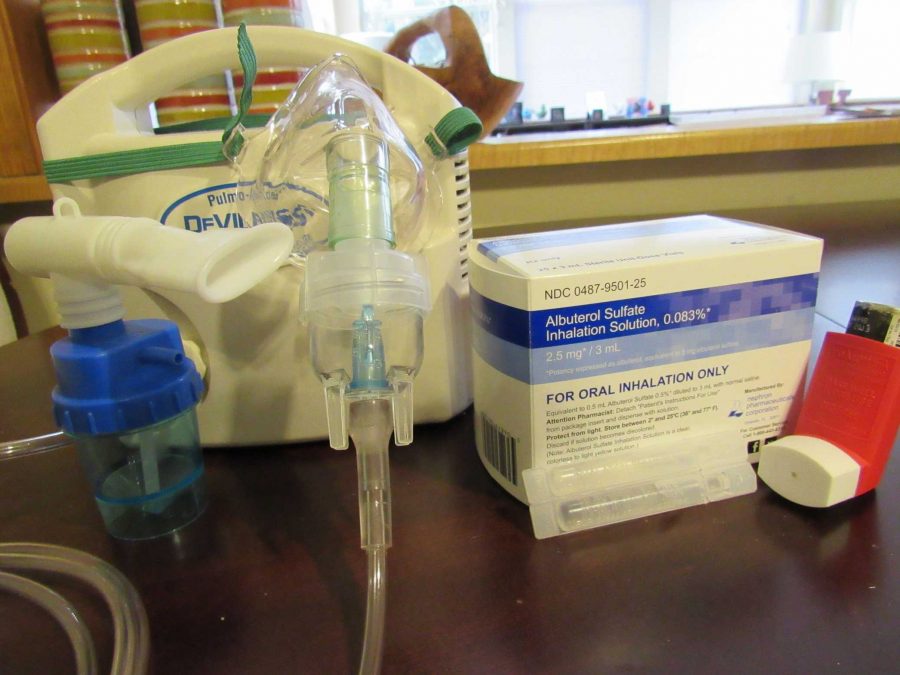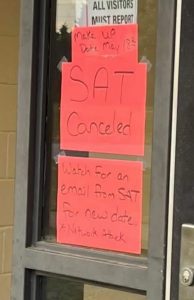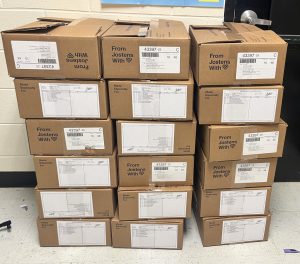Students should recognize struggles of fellow students with asthma
Jan 13, 2016
Many students don’t realize the struggles of their fellow students who have asthma, a chronic disease that inflames the airways and bronchial tubes. Although students may know what asthma is, they probably do not know what it’s truly like to have such a disease.
Someone with asthma may struggle with simple exercises, such as running or walking up a flight of stairs. Junior Margaret Eldredge said, “My asthma is exercise induced.” Students who have asthma and take physical education classes should keep their inhalers around. However, exercise is not the only trigger for asthma attacks.
Second hand smoking or smoke from a simple bonfire may also cause wheezing. Margaret said, “Cigarettes and illnesses are some of my triggers.” Allergy seasons are different for asthmatics. Some students may find themselves struggling in the summer and fall time, fall to winter, winter to spring or all year long.
She said, “My down season would be fall. That’s when my allergies trigger my asthma. I especially hate ragweed and mold.” Mold, a type of fungus formed from humidity, causes many asthmatics to wheeze or have asthma attacks. Ragweed, a type of bush that releases its pollen in the fall, is found to trigger many asthma symptoms, as well.
There is no current cure for asthma. However, there are ways to control or temporarily fix an asthmatic’s breathing problems. A student may have to take medicine through an inhaler. It is common for asthmatics to carry an emergency inhaler, which can quickly stabilize the weak lungs and bring the asthmatic back to normality.
“It basically sucks when I don’t have my rescue inhaler. It’s pretty difficult to breathe without it. I become short breathed and cough a lot,” Margaret said.
Another way to temporarily treat the lungs is by using a nebulizer. A nebulizer is a machine that uses electricity to convert liquid albuterol sulfate into an easier inhalation for those who have a more difficult time taking a hand inhaler. However, an excessive use of albuterol may cause paradoxical bronchospasm, a severe side effect that causes the lungs to have spasms, making it even more difficult for the patient to breathe.
Margaret said, “I don’t typically take the nebulizer, but I used to have to wake up at [4 a.m.] to use it. I prefer to use an inhaler and [an] emergency inhaler.”
Students who do not have asthma may get sick with colds and infect students who have asthma. A typical cold may cause a normal student to have thicker mucus and a stuffy nose, but for the asthmatic student, the thicker mucus makes the student strain for air.
“When a cold triggers my asthma, it hurts to breathe, and it hurts more when I cough a lot,” Margaret said. The stuffy nose causes the asthma sufferer to struggle even more.
A student with asthma may also take longer to get well from a cold. Some colds may last as long as a week or even a month. Sick students should stay home to avoid infecting others.
“What I hate most about having asthma is being prone is sickness like pneumonia, and I can’t run for a long time like normal people. If I didn’t have asthma I would like being able to run without breathing problems,” Margaret said.
Students and teachers need to recognize the daily struggles asthmatics face in order to help them.










